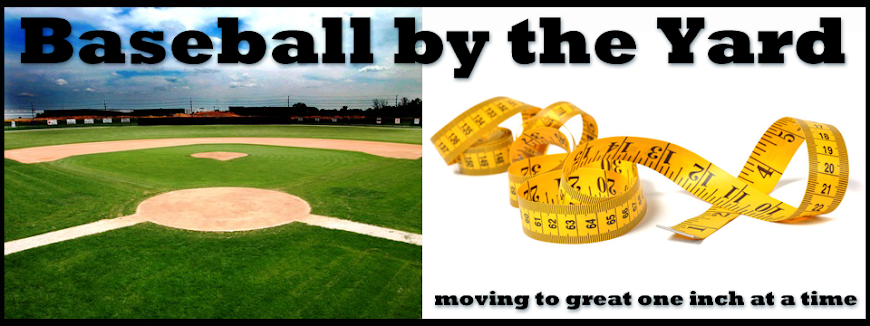 |
A wide, strong foundation
by Albert Pujols. |
The 10th of 12 posts related to common mistakes players make by position.
Poor foundation. When instructing hitters, many coaches take a “ground up” approach. This means nothing is worked on until a batter has created a good, strong foundation with his feet. In sports, the “athletic position” is fundamental to the success of many varying types of athletes. It involves the position the body gets into in order to maximize speed, power, quickness, lateral mobility (side to side), and vertical mobility (up and down). Tennis players waiting for a serve get into this position. A basketball player guards another in this position. A soccer goalie waits for a penalty shot in this position. A quarterback, running back, and line-backer all are in this position before the start of the play. Too many young hitters are not in this “athletic position” when they are attempting to hit. It requires a batter to widen his feet to at least shoulder width. There is a slight bend in the knees so the weight is more on the balls of their feet. The waist is slightly bent and the eyes are level and still. All the players mentioned earlier are in this position because it allows them to do anything with the most athleticism. Starting off in a stance that does not include these basic things automatically puts the player at a disadvantage because the player has to get in this position as the ball is moving in order to hit effectively. Many never do. Players should help themselves by starting in this position. It’s one less thing they have to worry about once the pitch is thrown.
Not ready to hit. There aren’t many things worse than watching a hitter take a first-pitch strike right down the middle with runners in scoring position and the game on the line. There certainly are times when taking a pitch is warranted but this is probably not one of them. Usually this lack of aggression is caused by the hitter not being ready to hit when he steps into the box. As a result, he takes a pitch to get a feel for the pitcher and/or the at-bat. Unfortunately, the pitch taken may be the only good pitch he sees that at-bat. This problem increases as players get older because the likelihood of seeing multiple good pitches to hit in an at-bat decrease as one moves up the baseball ladder. To fix this, a batter must know the situation he is walking into before he steps up to the plate. This mental process must occur in the on-deck circle. A coach would much rather see a hitter swing at a pitch over his head in that situation than take a strike. At least the batter is showing the coach that he is ready to hit and knows that being aggressive is important in that situation. Be ready to swing from the first pitch to the last.
 |
Vladimir Guerrero. Nobody can accuse
him of lacking aggression or not
being ready to hit. |
Too mechanical. One of the advantages players have today over previous generations is the ability to get quality instruction. There are many more facilities that exist that provide private and/or group instruction to players who want to get better. This is a good thing. However, sometimes hitters become too mechanical because of all the attention paid to technique. As I eluded to in a previous post, organized baseball has its downside. Players are constantly taught by adults to hit using the proper technique but some of those players focus too much on technique in the batter’s box. As stated in the previous hitting mistake, players need to do much of this kind of thinking in the on-deck circle and take more of a “see it and hit it” approach while in the box. Too much focus on mechanics at the wrong time can cause hitters to lack aggressiveness and fail to “let it fly” when swinging.
Ignoring the future. If you read anything regarding sports psychology, you probably will quickly run across the concept of “staying in the moment.” Basically, that means focusing on the here-and-now as opposed to worrying about what happened in the past or what might happen in the future. This is great advice for any baseball player. That being said, when it comes to practicing and developing a player’s skills, many players choose to focus on drills and skills that will help them in the present and fail to plan for the future. Most players who move on and play college and professional baseball were the top hitters on their high school teams and more times than not, batted in the 3rd, 4th,, or 5th spot in the batting order. This poses a problem for many hitters after they leave high school. Most of these hitters are rarely (if ever) asked to sacrifice bunt, squeeze bunt, hit and run, base hit bunt, or move runners over. Those responsibilities are usually reserved for everyone else in the line-up. Coaches want their 3, 4, and 5 hitters to swing away and drive in runs. However, when these hitters move on to college and/or pro ball, many no longer hit in these spots in the line-up and will be required to do these “little ball” skills. Unfortunately, many don’t have a lot of experience doing these skills and most never bothered to pay much attention to the development of them because they are never required to do them in a game. A player who wants to succeed at the next level has to start thinking about the skills that they will need to perform at that level and begin to incorporate them into their training today.
Tomorrow: Base Running Mistakes




















